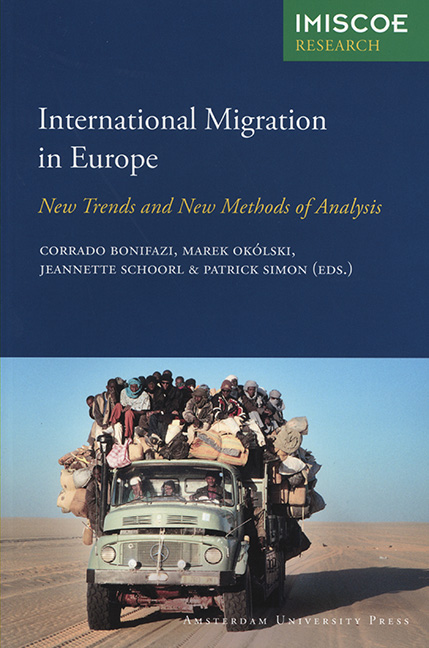Book contents
- Frontmatter
- Contents
- Preface
- 1 Introduction
- PART I NEW FORMS OF MIGRATION IN EUROPE
- PART II EVOLUTION OF REGIONAL PATTERNS OF INTERNATIONAL MIGRATION IN EUROPE
- PART III MEASURING INTEGRATION: IMMIGRANTS AND THE SECOND GENERATION
- PART IV SPECIAL SURVEYS IN INTERNATIONAL MIGRATION STUDIES
- List of Contributors
- Index
- Other IMISCOE Titles
1 - Introduction
Published online by Cambridge University Press: 22 June 2021
- Frontmatter
- Contents
- Preface
- 1 Introduction
- PART I NEW FORMS OF MIGRATION IN EUROPE
- PART II EVOLUTION OF REGIONAL PATTERNS OF INTERNATIONAL MIGRATION IN EUROPE
- PART III MEASURING INTEGRATION: IMMIGRANTS AND THE SECOND GENERATION
- PART IV SPECIAL SURVEYS IN INTERNATIONAL MIGRATION STUDIES
- List of Contributors
- Index
- Other IMISCOE Titles
Summary
Some of the most rapid and radical changes in the history of European international migration have taken place over the last fifteen to twenty years. After 45 years of real socialism, the fall of the Berlin Wall has brought Central and Eastern Europe (CEE), previously isolated by the Iron Curtain, back into the continental migration system. All this has occurred in a context that, since the end of the 1980s, was already witnessing important new developments. The Southern European countries have emerged as centres of attraction and have become the new promised land for migrants coming from both old and new sending countries. In turn, the Western European countries have been looking for a new type of immigrant – better educated and possessing skills that can be adapted to modern and fast-developing technologies. At the same time, these countries have suddenly been confronted with integrating the children of immigrants recruited for employment in the first 25 years after the end of World War II. The result has been a radical transformation of all the aspects related directly and indirectly to migration dynamics, including the direction and size of migration flows, migration policies, the role of various countries in the continental migration panorama, and the rising concerns for integration processes both at the policy and scientific levels.
New destinations, new regions of origin and new flows have thus emerged. Economic transition, political changes and ethnic conflicts in CEE have affected the size and direction of European migration flows, while flows from non-European countries have continued to account for a sizeable part of migration in Europe. At the same time, increasingly restrictive immigration policies have produced a shift from the traditional migrant workers and their families to large flows of asylum seekers and undocumented migrants. The extraordinary increase of the immigrant populations in Southern European receiving countries after the regularisations of recent years reflects the current magnitude of unofficial channels of recruitment. Although most of the traditional national migration models have proved to be inadequate, there have been major changes in migration policies, and new regulatory regimes have been implemented in most of the European countries.
- Type
- Chapter
- Information
- International Migration in EuropeNew Trends and New Methods of Analysis, pp. 9 - 16Publisher: Amsterdam University PressPrint publication year: 2008



